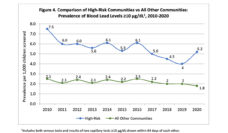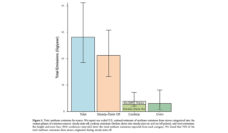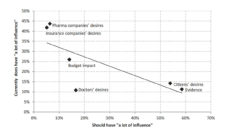Unsafe housing conditions and indoor environmental hazards contribute to significant illness and death worldwide. In the U.S., approximately 20-30% of asthma cases are triggered by environmental factors at home. Twenty-one thousand lung cancer deaths are caused by radon poisoning, and over 24 million homes have lead-based paint hazards. Unintentional injuries, such as burns, suffocation, drowning, gun injuries, falls, choking, and poisoning, are the leading causes of death for children under 14. Worldwide, 3.2 million deaths annually are due to household air pollution, primarily from the use of solid fuels for cooking.
Despite these adverse health effects, most national surveys and indices of housing quality do not routinely ask about environmental health hazards in the home. Existing indices often focus on physical deficiencies and ignore many other hazards like poor indoor air quality and ventilation, mold, toxic chemicals, and thermal discomfort.
The American Housing Survey is a nationally-representative survey of housing conditions widely used to track housing quality, stability, and occupant characteristics over time. Based on the World Health Organization’s Housing and Health Guidelines, our team developed a multidimensional Housing and Environmental Quality Index (HEQI) using the most recent American Housing Survey data available. The HEQI captures ten healthy housing domains of household fuel combustion, dampness and mold, pests and allergens, lead paint risk, high indoor temperatures, low indoor temperatures, household crowding, injury hazards, inadequate water and sanitation, and ventilation.
The mounting evidence linking residential environmental exposures with adverse health outcomes underscores the need for this data in the American Housing Survey and other national surveys.
Using our index, our study found that approximately 79% of U.S. households (92 million) had at least one environmental risk factor in their home. Prevalent risk factors included having heating or cooking fuel that was combustible (61.4%), signs of dampness and mold (15.9%), inadequate access to drinking water and sanitation (14.3%), and electrical or structural injury hazards (11.9%). We also found that older homes and homes with lower rent or lower resident satisfaction consistently reported problems with pests and allergens, low indoor temperatures, and physical injury hazards.
Our HEQI index also performed better than previous housing indices at capturing physical deficiencies and other environmental health risk factors. Specifically, compared to the Adequacy and Poor Quality indices, the HEQI captured four new environmental health domains of household fuel combustion, high indoor temperatures, severe crowding, and high building leakage, which enabled the identification of 57.7 million (63%) more households at risk.
In addition, we also found that some healthy housing domains recommended by the World Health Organization could not be adequately assessed by the HEQI due to the lack of questions asked in the American Housing Survey across years. These domains include radon, pesticides, asbestos, noise, and housing accessibility for people with functional impairments and should be included in future surveys.
Indoor environmental exposures are prevalent in U.S. households and not well-captured by existing housing indices. The HEQI is a multidimensional tool that can be used to monitor indoor environmental exposures and housing quality over time and inform areas for intervention. It can also be adopted by other national health surveys like the National Health and Nutrition Examination Survey (NHANES), National Health Interview Survey (NHIS), and the Behavior Risk Factor Surveillance Survey (BRFSS) to better understand the role of the residential environment on health risk factors and health outcomes. The mounting evidence linking residential environmental exposures with adverse health outcomes underscores the need for this data in the American Housing Survey and other national surveys.
Photo via Getty Images
















